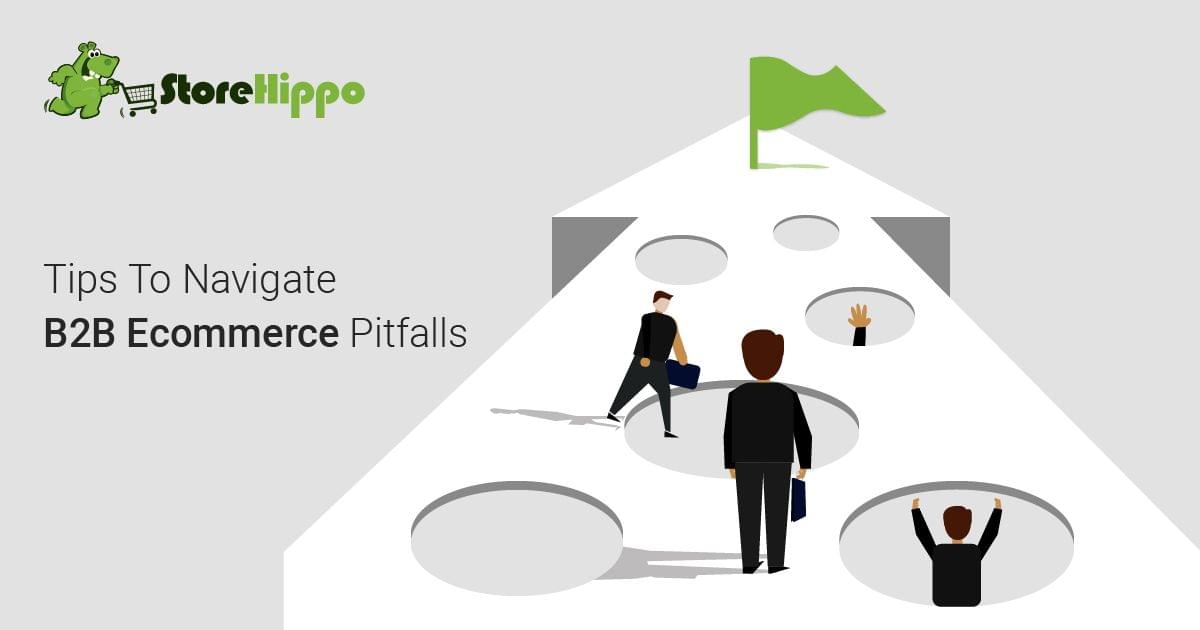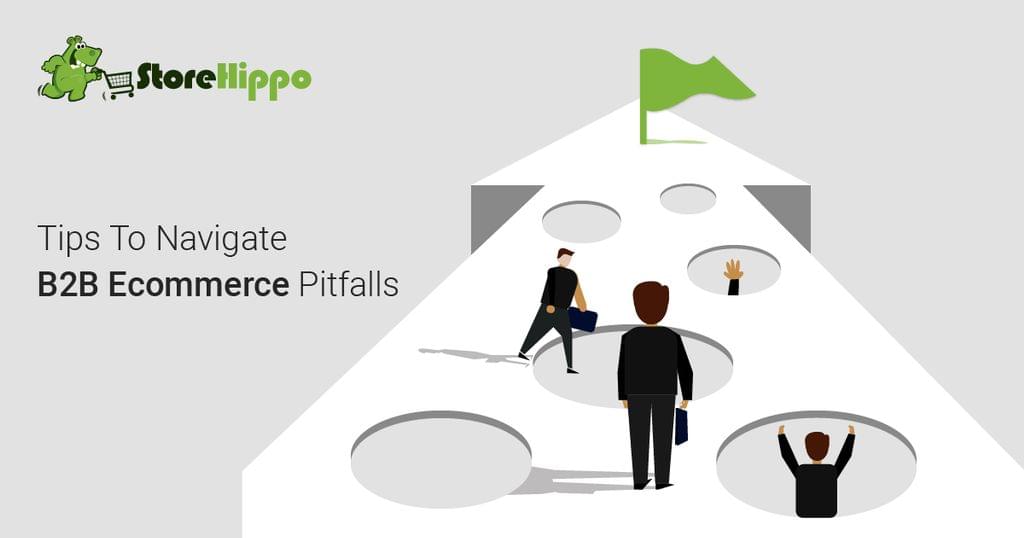Did you think commerce innovation is just for retailers and consumer brands?
Well, think again.
Nowadays, it’s more important than ever for B2B organizations to capitalize on the disruptive trends that are emerging. So, it’s either innovate or die. And don’t forget, when business buyers leave the office, they become those same retail buyers; and they all still demand exceptional customer experience.
So, what does this mean for Business to Business organizations that are looking to bring ecommerce strategies to the next level?
Well, it’s all about disruption. What we mean is, digitally disrupt your organization now so as to create frictionless commerce experiences for your customers.
According to Statista, the enterprise ecommerce is currently hovering at $12.2 trillion on a global scale which is way more than the current B2C industry (over 6 times). Just imagine where it would be in the years to come. Time to forge ahead.
But before marching forward on this journey,
Table of Contents
Let’s go over to understand what exactly is holding the wholesale industry back and how to overcome it.
1. More complex path to purchase
Selling products to an individual customer is in itself a simple transaction. We mean, just look at the process.
Customers see the products that they like. Customer reads reviews. Customer asks a friend for their opinion. Customer purchases product, and Customer completes the transaction.
Simple, isn’t it?
Now think about what it’s like selling products to a B2B company.
The buyer sees a product. Buyer contacts you to verify if it’s exactly the same thing they are looking for and if yes, whether it will fit the equipment they use. Buyer must submit 2 other quotes (similar to yours) to their superior. Buyer contacts you to negotiate the price (buyer contacts others to negotiate as well). Buyer presents new quotes to superior. Superior consults his team for approval. Once approved, superior gives the green signal to purchase. Buyer purchases product. Buyer transaction is complete.
Whoa! That took quite some time.
The reality is, Enterprise ecommerce buyers need information before buying and that too a lot of it. This includes information on product features, specifications, accessories, benefits, bulk pricing, model number, etc.
Moreover, they need information not only to satisfy themselves but also their colleagues in different departments, their superiors, or other involved parties. They need it clear, organized and thorough. And they need it fast.
Content is the key that will play a lead role in delivering that information. The best way is to provide them with the info with the help of
- A well-written FAQ section
- A user instructions manuals
- E-books
- Whitepapers
- Blog sections
- Instructions and educational videos
2. Higher and varying price points
One thing every B2B marketer can agree to is, every business is unique and it comes with its own needs. That’s why one always needs to create a customized solution for their business.
Even if your products are split into various levels or plans such as small business, executive or beginner, it doesn’t necessarily mean that they will fulfil the business’ demands. So, here’s what you can do-
- Use IP based pricing overrides to help deal with price points. It helps by allowing you to change the automated price of product as per the customer login.
- Never be afraid of experimenting with your enterprise ecommerce pricing strategy. Try A/B testing, it allows you to evaluate multiple pricing options before settling on any.
- Offer promotions and discounts. These are excellent in driving sales volume and velocity by motivating your customers to buy more and buy quickly.
- Another is, minimum order quantity based pricing. It allows you to make up for any reduced profit margin by selling larger volumes to your customers.
Apart from these, you can also offer first-time customer pricing, long-term customer pricing, bulk order pricing, or other such ways to package and promote products to your wholesale buyers.
But before you move forward with this, there is something you need to look out for and avoid at all costs while setting up pricing strategies for your B2B store.
Never use a “set it and forget it” pricing strategy i.e. focussing majorly on product development and marketing while treating pricing as an afterthought. What you can do instead is to treat it as a core competency of your business. Test and re-evaluate pricing in order to determine the proper mix of packages appealing to your customers.
3. Multiple brands or product lines
One size never fits all businesses, we have witnessed it multiple times, haven’t we? In this context, this means that you may have one generic product but that won’t be enough. You will need subcategories and multiple product lines to make it work.
For instance, if your enterprise eommerce business involves manufacturing and selling shampoo to a retailer, you will still need to offer different types of hair cleaning products in your line along with the various styles in those lines. Keep in mind, a retailer will always buy hair products based on the customer demand which can and does, change based on location.
The key here is to make it easy for buyers to find these different options. But that’s not all. Even marketing multiple product lines may cause you to run into issues of conflicting goals and agendas.
Which is why it is so important to make your B2B buyers see your brand as a single, unified brand. So how can you market multiple products without diluting your message (or overwhelming your audience as a matter of fact)? Let’s see-
Begin by creating a brand identity that emphasizes your core values in a way that’s congruent with the needs of our target audience. While doing so, do not hesitate to incorporate new products to your product lines. Or, if need be, improvise the already existing ones.
The best way to approach this would be to look out for an all-in-one enterprise ecommerce solution (such as StoreHippo) that helps you set up separate stores for each product line without even breaking a sweat. And that too with the help of a single admin console. What more could you want? You get to manage your entire inventory and customers from a single front.
4. Customer demand for rapid fulfilment and delivery
We live in times of instant gratification where customers often gravitate to companies that offer faster delivery times, so much so that they are even willing to pay a premium for it.
B2B businesses too, in return, will require a speedy delivery process with each purchase order. It’s pretty simple actually, the faster you can deliver the products to your buyers, the faster they are able to sell it before the customer can shop around too much.
Here’s what you can do.
- Improve inventory handling prowess- having the right inventory at the right time is one of the key steps in the order fulfilment process. Keeping your stock levels up to date, forecasting customer demands, etc. are a few such steps.
- Better warehouse management- of course, you will need a bigger B2B warehousing space, where else would you put your growing number of stock. Plus, you can transfer stock between warehouses to avoid any warehouse becoming stockless at any given time.
- Inventory transparency across all sales channels- transparency becomes more important when you are selling across multiple sales channels. This visibility keeps you updated so you can be proactive and replenish stocks to meet upcoming demands.
- Improve order management- the key to perfecting your online order fulfilment is to keep a keen eye on what’s happening with your order. In other words, your whole delivery team should be aware of the current status of each enterprise ecommerce order to avoid any unnecessary delays.
- Flexible order processing- you know what makes any customer feel special? Delivering their orders on time. Other things you can offer include delivering orders in bits and delivering it at several locations as per your customer preference.
5. Complex payment terms and processing
Credit lines and payment plans are a great way to maintain business buyers’ loyalty which can be used to create a better customer experience. Unfortunately, these complex payment terms can be quite a nightmare for account managers and accounting departments.
To begin with, there is purchasing approval. When a B2B business sells something to another business, there are almost always many parties involved. In this case, where one person sends the request, another one authorizes it. This oftentimes creates complicated arrangements. And this is why you need good Business to Business payment solutions in order to track down such details and handle them successfully and efficiently.
Apart from this, many business transactions still involve checks which is not only a painfully slow process but also comes with its own set of problems (let’s not get into those).
And lastly, let’s not forget about enterprise ecommerce security, a cornerstone of trust when it comes to large transactions. The safety of sensitive data has always been a top-most priority, especially when speaking in financial terms. In the online wholesale industry, security breaches can be fatal.
Despite so many issues, many wholesale companies still prefer the old traditional ways. Why? Because of concerns regarding hefty set-up costs and a tedious implementation process, which keep these companies from switching to digital payments.
But on the other hand, to pay less attention to the Business to Business payment segment would be a short-sighted approach, don’t you agree?
So, in order to capitalize on the potential of B2B digital payments, we need a concentrated approach to bring about a new mindset towards regular payment practices.
The bottom line is to go digital. There is no other alternative and you certainly cannot go back to signing and cashing out cheques.
And the best way to go digital is with the help of an ecommerce solution that already comes pre-equipped with modern-day features to help you with easy payment terms and processing.
This enterprise ecommerce solution should not only be integrated with multiple payment options but should also be a secure one (so as to prevent any security breaches or loss of data). Moreover, it should make ample use of technology and sophisticated algorithms to make payment solutions flexible in nature. This, in turn, will make the entire experience faster and ultimately much more enjoyable.
Apart from the easy payment options, your ecommerce platform should also offer an inbuilt solution to automate as well as simplify the complex payment processes. And lastly, it should easily integrate with third-party apps as well. This helps the B2B customers complete their transactions in real-time, get the terms they need, and start a new relationship with your company on the right foot.
So you see, by making the online transactions more flexible, with lower costs and no risk, wholesalers and distributors will be better able to create a more user-friendly customer experience.
Bottom Line:
Business to Business electronic commerce, as you might have guessed by now, is a bit complex. To do it well requires a blend of many skill- complex payments, fast deliveries etc. along with a strategic understanding of the enterprise ecommerce business. Avoid these five issues that are still holding back the wholesale industry with the help of a modern-day e-commerce solution provider.
Try StoreHippo.
StoreHippo helps both retail and wholesale companies resolve many of the challenges (such as ones mentioned above) that are unique to their business. StoreHippo platform not only comes pre-equipped with a variety of features but it also allows you to customize your business store as per your needs. So, what are you thinking?
Book a free demo or start your 14 days trial period today!





















Leave A Comment